News
MRL Releases FEBio 1.2
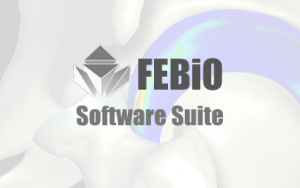 Febio 1.2.0 is now available for download. It includes several new features including:
Febio 1.2.0 is now available for download. It includes several new features including:- faster, multi-threaded linear solvers (Pardiso, SuperLU)
- contact improvements such as improved stability for large compression problems
- a new biphasic contact algorithm to simulate contact between two poroelastic materials
- new material models such as strain-dependant poroelasticity, Holmes-Mow elasticity, ...
As of this version, we will also be distributing our test and examples problems, which illustrate how to setup particular finite element models in FEBio. The testing and examples folders will be located in the installation folder.
Also, a new release of PostView (version 1.3) is now available. The GUI was completely redesigned to provide easier and faster access to the model’s data and properties. A number of improvements were made to the visualization tools as well.
Tom Fletcher and Sarang Joshi paper awarded "most cited" by Signal Processing
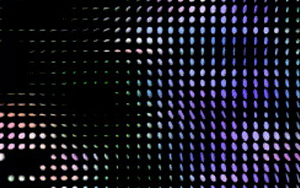 The international journal Signal Processing has announced its award for the 2010 Signal Processing most cited paper goes to Riemannian Geometry for the Statistical Analysis of Diffusion Tensor Data” by Drs. Tom Fletcher and Sarang Joshi. This distinction is based solely on the highest number of cites, excluding self-citations, received by the end of 2009 for all articles published in the journal between the years 2007–2009 as reported by SCOPUS reports (www.scopus.com).
The international journal Signal Processing has announced its award for the 2010 Signal Processing most cited paper goes to Riemannian Geometry for the Statistical Analysis of Diffusion Tensor Data” by Drs. Tom Fletcher and Sarang Joshi. This distinction is based solely on the highest number of cites, excluding self-citations, received by the end of 2009 for all articles published in the journal between the years 2007–2009 as reported by SCOPUS reports (www.scopus.com).P.T. Fletcher, S. Joshi. “Riemannian Geometry for the Statistical Analysis of Diffusion Tensor Data,” In Signal Processing, Vol. 87, No. 2, pp. 250--262. February, 2007.
Announcing VisTrails 1.4
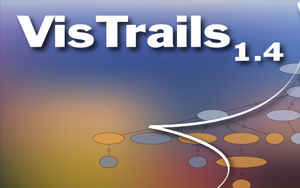 The VisTrails development team is pleased to announce the release of VisTrails 1.4. The new version contains quite a list of improvements and bug fixes. For details, see the release notes.
The VisTrails development team is pleased to announce the release of VisTrails 1.4. The new version contains quite a list of improvements and bug fixes. For details, see the release notes.Download Now
Advanced Climate Change Visualization Presented at UN Climate Change Conference
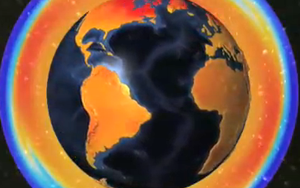 The VACET Center played a key roll in the production of the following visualization of historical and projected climate change data that was presented to participants at the UN Climate Change Conference in Copenhagen in December of 2009. The animated series of temperature anomaly maps was produced by averaging results from 15 of the most advanced climate models in the world resulting in the best projection of climate change to the year 2100. The visualization was created using software integrated with ViSUS data streaming technology developed largely by Valerio Pascucci and techniques developed at the DOE VACET Center.
The VACET Center played a key roll in the production of the following visualization of historical and projected climate change data that was presented to participants at the UN Climate Change Conference in Copenhagen in December of 2009. The animated series of temperature anomaly maps was produced by averaging results from 15 of the most advanced climate models in the world resulting in the best projection of climate change to the year 2100. The visualization was created using software integrated with ViSUS data streaming technology developed largely by Valerio Pascucci and techniques developed at the DOE VACET Center.For more information about ViSUS see: ViSUS: Visualization Streams for Ultimate Scalability.
ParaView Now Includes the VisTrails Provenance Plugin
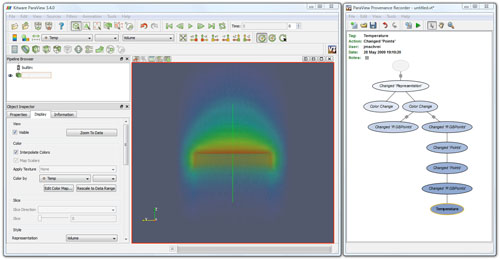 Kitware, Sandia National Laboratories and Los Alamos National Lab have released ParaView 3.6.2. The latest release now includes the VisTrails Provenance Explorer plugin in the Windows and Linux packages. VisTrails is an open-source scientific workflow and provenance management system developed at the SCI Institute that provides support for data exploration and visualization.
Kitware, Sandia National Laboratories and Los Alamos National Lab have released ParaView 3.6.2. The latest release now includes the VisTrails Provenance Explorer plugin in the Windows and Linux packages. VisTrails is an open-source scientific workflow and provenance management system developed at the SCI Institute that provides support for data exploration and visualization. The Fourth Paradigm: Data-Intensive Scientific Discovery
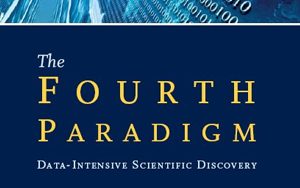 Four SCI faculty members, Chuck Hansen, Chris Johnson, Valerio Pascucci, and Claudio Silva contributed a chapter on visualization for data-intensive science in the recently released book The Fourth Paradigm: Data-Intensive Scientific Discovery.
Four SCI faculty members, Chuck Hansen, Chris Johnson, Valerio Pascucci, and Claudio Silva contributed a chapter on visualization for data-intensive science in the recently released book The Fourth Paradigm: Data-Intensive Scientific Discovery.ImageVis3D Mobile iPhone App Hits the News
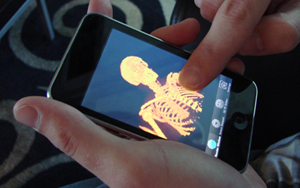 The release of ImageVis3D Mobile for the iPhone has received wide coverage.
The release of ImageVis3D Mobile for the iPhone has received wide coverage.In addition to a news story on KSL channel 5, it has generated a number of print articles such as:
The Daily Utah Chronicle:
"U researchers develop iPhone applications"
Tom Fogal and Jens Krüger's work on "ClearView" profiled on German ScienceBlogs.
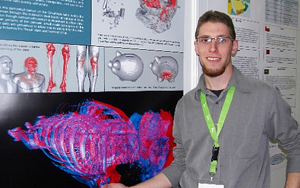 See full story on ScienceBlogs.
See full story on ScienceBlogs.
SCI Starts New Phase in the Warnock Engineering Building
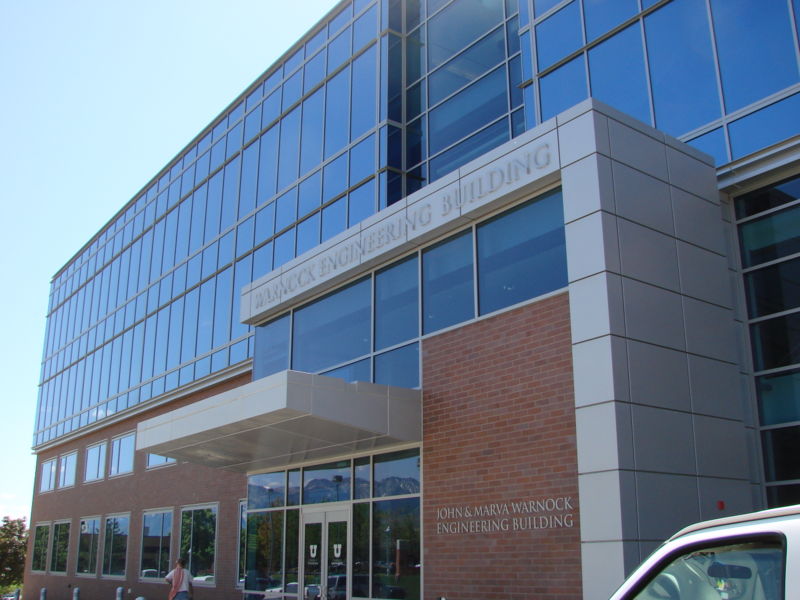 The Scientific Computing and Imaging Institute has begun a new phase of life in the John E. and Marva M. Warnock Engineering Building, a newly constructed, state of the art research facility.
The Scientific Computing and Imaging Institute has begun a new phase of life in the John E. and Marva M. Warnock Engineering Building, a newly constructed, state of the art research facility.The building is named for two primary donors who helped make it possible. John E. and Marva M. Warnock are both University of Utah alumni and founding pioneers of the information age. John Warnock is a co-founder of Adobe Systems, Inc., an industry leader in the area of graphics, publishing, web, and electronic document technologies. Marva Warnock is a designer and partner with Marsh Design in Palo Alto and also serves on the National Leadership Council for the Utah Museum of Fine Arts at the University of Utah. The project also benefited by a major contribution from Ed Catmull, another University of Utah alumnus who has been a major pioneer in computer technology. Dr. Catmull developed a series of fundamental technologies that made 3D computer graphics possible. He went on to found Pixar Animation Studios and now serves as President of both Pixar and Walt Disney Animation Studios. The Scientific Computing and Imaging Institute is very thankful for the generous contributions by the Warnock family, Ed Catmull and others who made our new home possible.
ImageVis3D Mobile now available
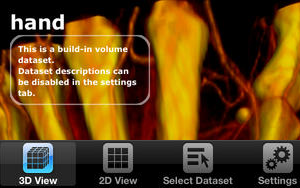 ImageVis3D Mobile for the iPhone is now available from Apple iTunes App store.
ImageVis3D Mobile for the iPhone is now available from Apple iTunes App store.
Chris Johnson Awarded Cyber Pioneer Award
 Chris Johnson, director of the Scientific Computing and Imaging Institute, will receive the prestigious Cyber Pioneer Award. Alan Hall, chair of the Utah Technology Council, will present the award at the 2009 Utah Cyber Symposium on September 25th. The award is designed to honor individuals who are pioneers in Utah’s high tech industry.
Chris Johnson, director of the Scientific Computing and Imaging Institute, will receive the prestigious Cyber Pioneer Award. Alan Hall, chair of the Utah Technology Council, will present the award at the 2009 Utah Cyber Symposium on September 25th. The award is designed to honor individuals who are pioneers in Utah’s high tech industry.